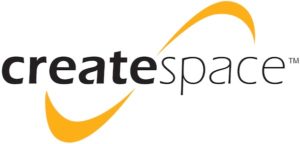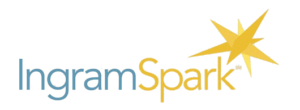 An Expanded Distribution Channel (EDC) offers authors access to a larger audience: online retailers, bookstores, libraries*, academic institutions*, and other US distributors. However, Create Space is not a distributor, not really. They utilize Ingram Distribution for their “expanded” service.
An Expanded Distribution Channel (EDC) offers authors access to a larger audience: online retailers, bookstores, libraries*, academic institutions*, and other US distributors. However, Create Space is not a distributor, not really. They utilize Ingram Distribution for their “expanded” service.
*You must use a Create Space ISBN to be included in their EDC for libraries and academic institutions.
So what does this mean? Let’s first take a look at the Wholesale Discount, the life blood of retailers.
What is Wholesale Discount of Books?
When it comes to selling a product, everyone along the supply chain gets a ‘cut’: from the printer to the distributor and finally, the retailer. The wholesale discount is the amount of the retail price you are willing to give to a retail account such as Ingram Distribution (wholesaler/distributor) or Barnes & Noble (retailer).
Wholesale discount for books can range from 20% on up, with 50% – 55% the standard offering. For retailers to even consider carrying your book, you need to provide an incentive for them to do so. Nothing speaks louder than money.
Here’s an Example with 55% wholesale discount:
Let’s say you have a book with a list price (retail price) of $24.95. Your book printing cost (POD) is $6.96/book, and you offer 55% Wholesale Discount. (15% (distributor) + 40% (retailer))
- $24.95 (retail) x 55% (whsle discount) = $13.7225 wholesale discount.
- $24.95 (retail) – $13.7225 (discount) = $11.2275 or $11.23/book wholesale.
- $24.95 (retail price) – $11.23/book = $13.72 (retailer potential profit margin).**
- $11.23 (whsle) – $6.96 (printing costs) = $4.27 (author royalty).
**minus: shipping, handling, stock and employee costs.
The final royalty doesn’t look like much does it? But what wholesale discounts offer is far greater. It is like having a mini sales force, working to sell your product, and the salesmen only get paid IF the book sells.
So what happens when you offer less than the “industry standard” of 55%?
Create Space
 If you publish with Create Space, and you enroll your book in their EDC (Expanded Distribution Channels) program, then your wholesaler is Ingram Distribution, NOT Create Space. This means another “mouth” to feed when publishing your book.
If you publish with Create Space, and you enroll your book in their EDC (Expanded Distribution Channels) program, then your wholesaler is Ingram Distribution, NOT Create Space. This means another “mouth” to feed when publishing your book.
Not only do you need to give the printer and the retailer and cut, Create Space (printer) has a ‘partner’ (Ingram) which receives a piece of the pie. While I do not have an issue with this setup, the problem is when you want to expand your sales distribution network, and that is the problem.
If you publish through Create Space, your wholesale discount to retailers is pre-set to around 25%. While you may think that means more money in your pocket that isn’t entirely accurate. More sales equates to more royalties. So, unless your book is a bestseller, what is the incentive for bookstores to consider, let alone carry your book with lower profit margin incentive?
Let’s take a look at our Example with 25% wholesale discount:
- $24.95 (retail) x 25% (whsle discount) = $6.2375 wholesale discount.
- $24.95 (retail) – $6.24 (discount) = $18.71/book wholesale.
- $24.95 (retail price) – $18.71/book = $6.24 (retailer potential profit margin).**
- $18.71 (whsle) – $6.96 (printing costs) = $11.27 (author royalty).
**minus: shipping, handling, stock and employee costs.
You can see that there is a minimal incentive for a bookstore to carry a book if the profit margins are low. You, the author, may make more in royalty, but that is directly related to whether a bookstore (a) carries your book and (b) the book sells.
The Ingram Difference
 When using Ingram (Ingram Spark / Lightning Source), the author/publisher can set the discount for each book. If you choose the standard 55% discount, Ingram will take 15% of the list price as their wholesale fee, leaving the correct trade discount of 40% for the retailer.
When using Ingram (Ingram Spark / Lightning Source), the author/publisher can set the discount for each book. If you choose the standard 55% discount, Ingram will take 15% of the list price as their wholesale fee, leaving the correct trade discount of 40% for the retailer.
Ingram also offers something that 99% of retailers demand — a return policy. Yes, CS is using Ingram for distribution; however, booksellers “cringe” when then hear the name Create Space. They trust Ingram, and with them representing your book, you have a much greater chance of success.
Conclusion
Believe it or not, I recommend you use both Ingram AND Create Space. Why? Because Amazon Corporation OWNS Create Space, and should there be any future disagreements between the bookstore Amazon.com and any publishers/distributors, you can be assured that your CS book will remain listed on their site.
Also, Amazon Bookstore may also give preferential treatment to your work — after all, they are making money from you through CS as a printer, distributor, as well as a retailer (Amazon bookstore). It’s a win-win for them.
As for Ingram, it enables you to expand your distribution (to over 39,000 worldwide) and entice libraries, educational institutions, and other booksellers to carry your book, through higher wholesale discount incentives.
As for what wholesale price to offer, unless your name is Stephen King or JK Rowling, you need help marketing and selling your book (and building your Author Brand) and breaking into the market. My recommendation? Don’t go lower than 50% and offer Book returns.
Whether you plan to print soon or in the distant future, you can register now so your accounts will be ready when you are.
- IngramSpark.com
- CreateSpace.com *
- Create Space print is now offered through their KDP (KINDLE ebook) program, at kdp.amazon.com